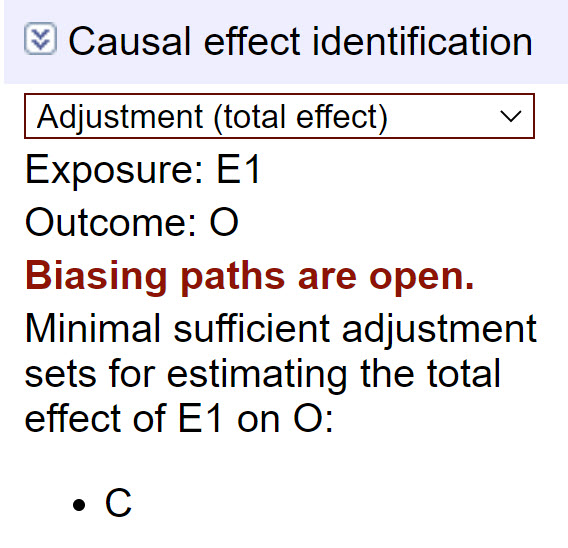I am working with DAGs as a way to do some causal modeling. I am using dagitty - both the website and the R package. I feel like I have a good grasp of most things related to confounding, adjustment sets, and so on. However, something has me confused. Let me demonstrate by example.
I understand (and dagitty confirms) that to extract a causal value for E1 I need to adjust for C. Dagitty reports "
So, for example, if everything was linear, I would build a model O ~ E1 + C, and I would intepret the coefficient of E1 as causal. I understand that I cannot interpret C as causal - this would violate the "Table 2 Fallacy".
Now for the part that confuses me. Dagitty allows a user to pick multiple exposures. So, for example, I can choose both E1 and C as "exposures".
Dagitty now tells me that "No adjustment is necessary to estimate the total effect of E1,C on O." This would seem to suggest that the same model: O ~ E1 + C can be used, but now ?both? E1 and C have casual meaning. Obviously, this is wrong.
My question is - what is the meaning of "the total effect of E1,C"? Since C causes E1 (by my diagram) I can't set them independently. More generally, what is the meaning of any multiple exposure selection. In other words, let's say I had the DAG E1 -> O <- E2. What would be the meaning of setting both E1 and E2 as exposures?
Thanks in advance for any explanations. Every time I think I have my head wrapped around causal inference, some new "wrinkle" pops up.



